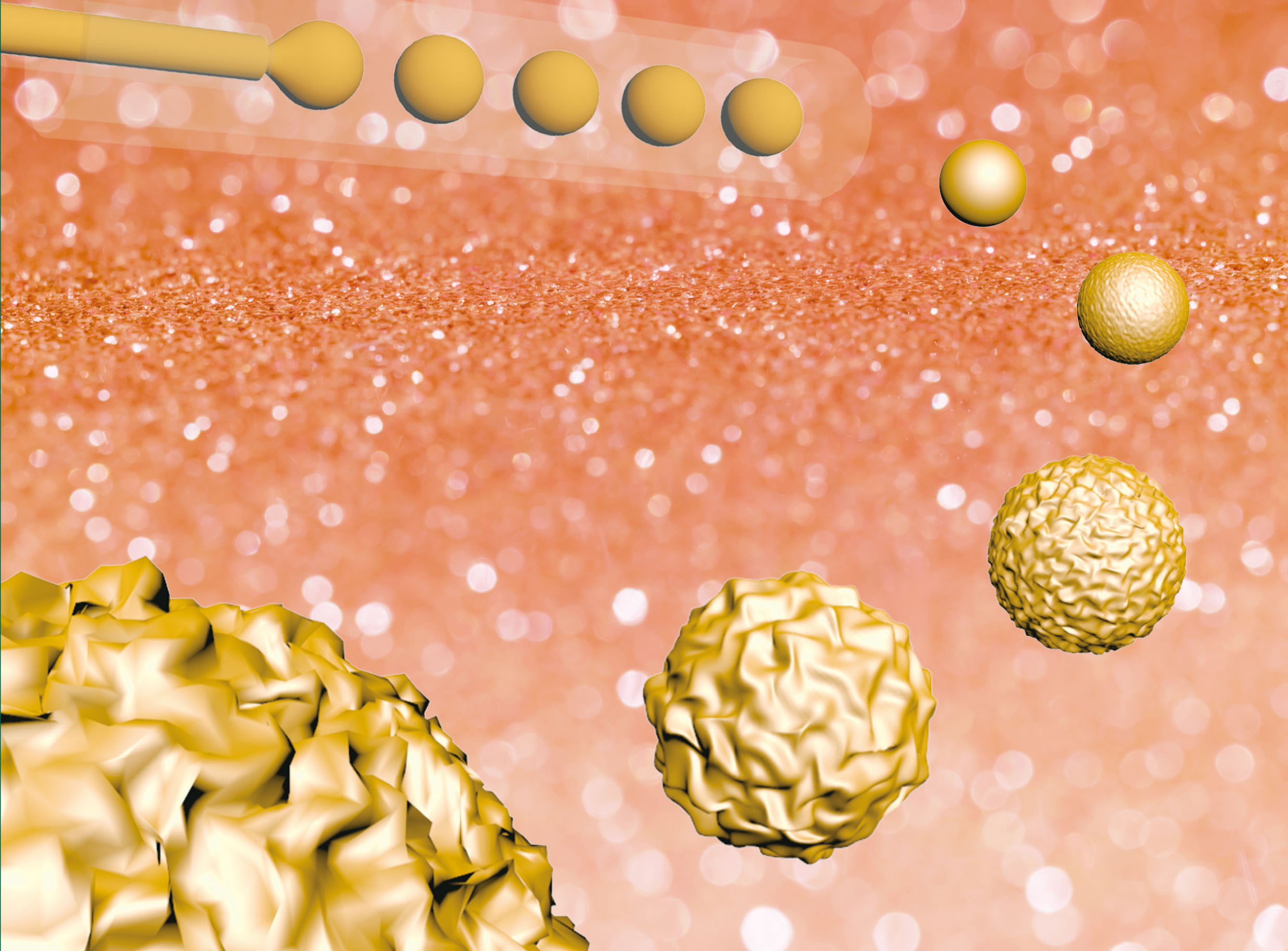SPECIAL TOPIC—Statistical physics and complex systems

2020, 69 (8): 080201.
doi: 10.7498/aps.69.20191584
Abstract +
Rank aggregation aims to combine multiple rank lists into a single one, which has wide applications in recommender systems, link prediction, metasearch, proposal selection, and so on. Some existing studies have summarized and compared different rank aggregation algorithms. However, most of them cover only a few algorithms, the data used to test algorithms do not have a clear statistical property, and the metric used to quantify the aggregated results has certain limitations. Moreover, different algorithms all claim to be superior to existing ones when proposed, the baseline algorithms, the testing samples, and the application scenario are all different from case to case. Therefore, it is still unclear which algorithm is better for a particular task. Here we review nine rank aggregation algorithms and compare their performances in aggregating a small number of long rank lists. We assume an algorithm to generate different types of rank lists with known statistical properties and cause a more reliable metric to quantify the aggregation results. We find that despite the simplicity of heuristic algorithms, they work pretty well when the rank lists are full and have high similarities. In some cases, they can reach or even surpass the optimization-based algorithms in performance. The number of ties in the list will reduce the quality of the consensus rank and increase fluctuations. The quality of aggregated rank changes non-monotonically with the number of rank lists that need to be combined. Overall, the algorithm FAST outperforms all others in three different rank types, which can sufficiently complete the task of aggregating a small number of long rank lists.
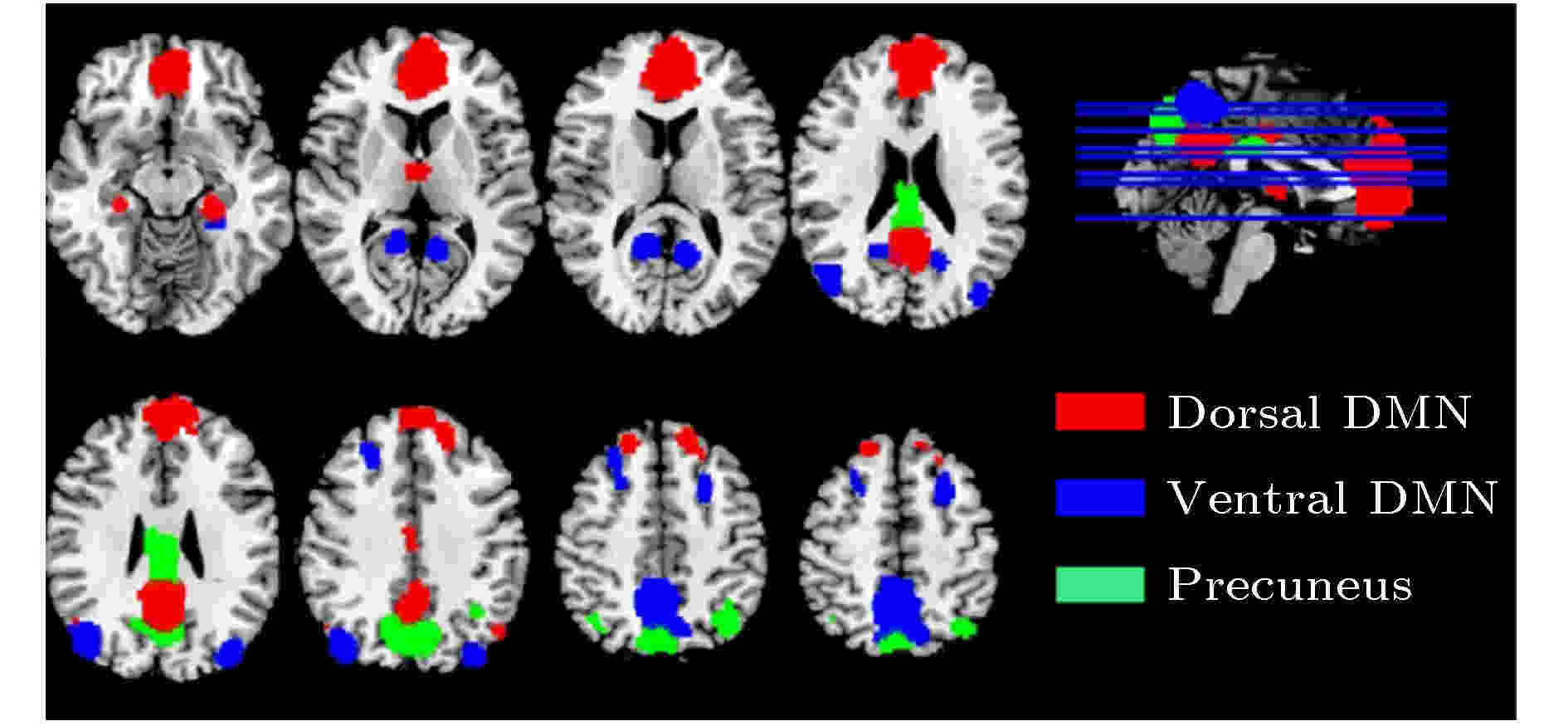
2020, 69 (8): 080203.
doi: 10.7498/aps.69.20200170
Abstract +
Brain is a typical complex system with characteristics such as self-adaptation, self-organization, and multistability. The activity of the default mode network (DMN), a crucial functional subnetwork of the human brain in resting state, obeys typical non-equilibrium statistical mechanical processes in which the system continually switches among multiple metastable states. Revealing the underlying dynamical mechanism of these processes has important scientific significance and clinical application prospects. In this paper, according to the blood oxygen level dependent (BOLD) signals obtained from functional magnetic resonance imaging (fMRI), we build an energy landscape, disconnectivity graph and transition network to explore the non-equilibrium processes of DMN switching among different attractors in resting state. Taking the activities of high-level visual and auditory cortices for examples, we verify the intimate relationship between the dynamics of DMN and the activity modes of these external brain regions, through comparing the distributions in state space and the algorithms such as XGBoost and deep neural networks. In addition, we analyze the interaction between various DMN regions in the resting state by using the techniques such as compressive-sensing-based partial correlation and convergence cross mapping. The results in this paper may presnt new insights into revealing the dynamics of the intrinsic non-equilibrium processes of brain in resting state, and putting forward clinically significant biomarkers for brain dysfunction from the viewpoint of dynamics.
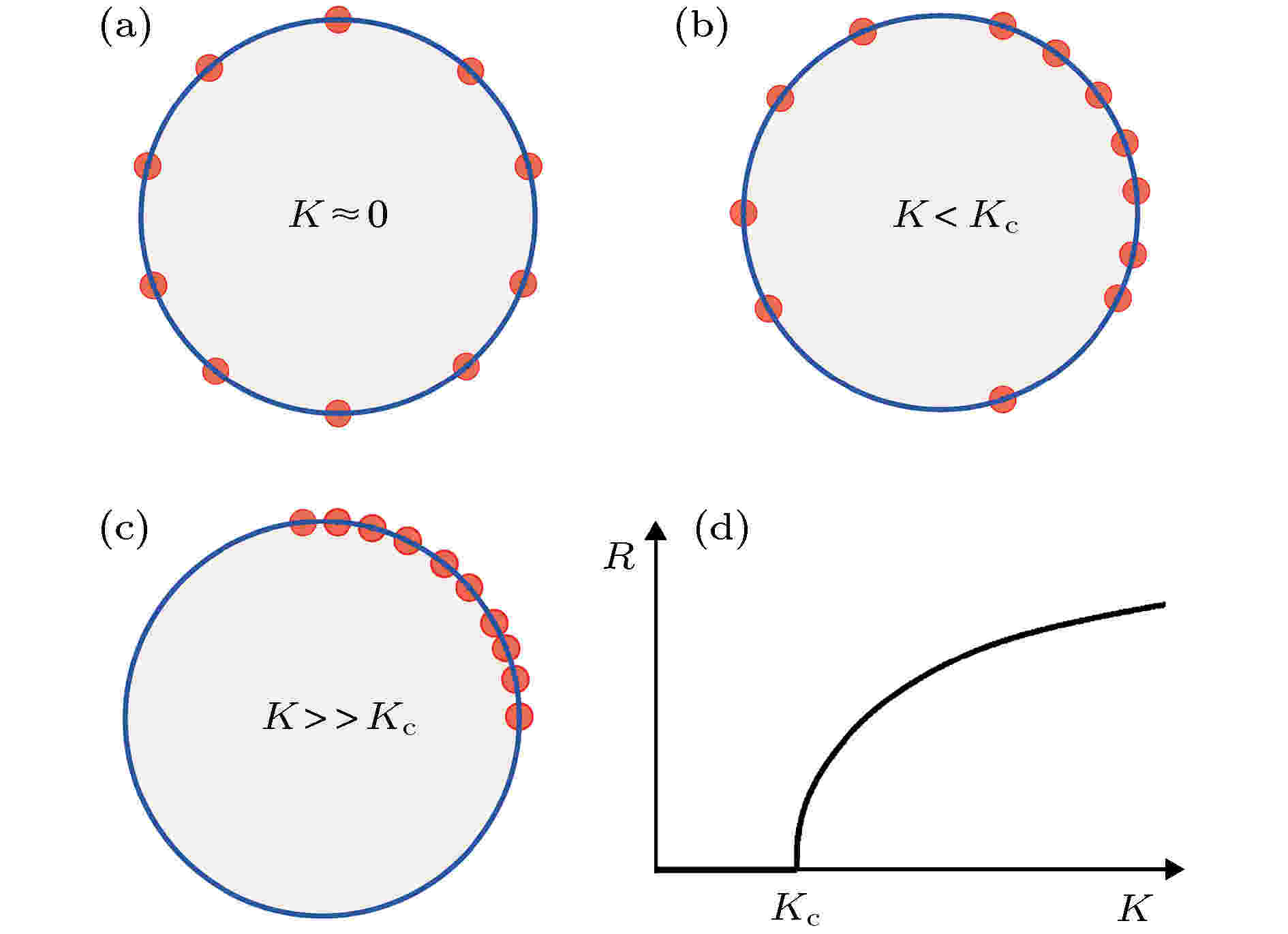
2020, 69 (8): 080502.
doi: 10.7498/aps.69.20191968
Abstract +
Rhythmic behaviors, i.e. temporally periodic oscillations in a system, can be ubiquitously found in nature. Interactions among various rhythms can lead to self-organized behaviors and synchronizations. This mechanism is also responsible for many phenomena such as nonlinear waves, spatiotemporal patterns, and collective behaviors in populations emerging in complex systems. Mathematically different oscillations are described by limit-cycle oscillators (pacemakers) with different intrinsic frequencies, and the synchrony of these units can be described by the dynamics of coupled oscillators. Studies of microscopic dynamics reveal that the emergence of synchronization manifests itself as the dimension reduction of phase space, indicating that synchrony can be considered as no-equilibrium phase transition and can be described in terms of order parameters. The emergence of order parameters can be theoretically explored based on the synergetic theory, central manifold theorem and statistical physics. In this paper, we discuss the order-parameter theory of synchronization in terms of statistical physics and set up the dynamical equations of order parameters. We also apply this theory to studying the nonlinear dynamics and bifurcation of order parameters in several typical coupled oscillator systems.

2020, 69 (8): 080503.
doi: 10.7498/aps.69.20191934
Abstract +
Spiral waves are ubiquitous in diverse physical, chemical, and biological systems. Periodic external fields, such as polarized electric fields, especially circularly polarized electric fields which possess rotation symmetry may have significant effects on spiral wave dynamics. In this paper, control of spiral waves in excitable media under polarized electric fields is reviewed, including resonant drift, synchronization, chiral symmetry breaking, stabilization of multiarmed spiral waves, spiral waves in subexcitable media, control of scroll wave turbulence, unpinning of spiral waves in cardiac tissues, control of spiral wave turbulence in cardiac tissues, etc.
2020, 69 (8): 080505.
doi: 10.7498/aps.69.20200450
Abstract +
Casimir force in quantum electrodynamics is the representation of zero point energy of vacuum. Depending on the type of fluctuation medium, generalized Casimir force covers a wide spectrum of topics in physics, such as, quantum, critical, Goldstone mode, and non-equilibrium Casimir force. In general, long range correlated fluctuations and constraints are two conditions for generating the Casimir force. In this paper, through a survey of the development of Casimir physics, we discuss several types of Casimir forces and several regularization methods. We end the paper with an outlook for the further development of Casimir physics in the future.

2020, 69 (8): 080506.
doi: 10.7498/aps.69.20200360
Abstract +
Quantum scar is an intriguing phenomenon in quantum or wave dynamics that the wavefunction takes an exceptionally large value around an unstable periodic orbit. It has attracted much attention and advances the understanding of the semiclassical quantization. Most of previous researches involving quantum scars focus on hard-wall quantum billiards. Here we investigate the quantum billiard with a smooth confinement potential which possesses complex classical dynamics. We demonstrate that the semiclassical quantization approach works well for both the stable and unstable classical periodic orbit, besides the fact that the shape of the orbits varies as the energy increases or even the stability switches. The recurrence rule of the quantum scars in this complex solf-wall billiard differs from that of the hard-wall nonrelativistic quantum billiard, such as being equally spaced in energy instead of being equally spaced in the square root of energy. These results implement the previous knowledge and may be used for understanding the measurements of density of states and transport properties in two-dimensional electron systems with random long-range impurities.

2020, 69 (8): 080507.
doi: 10.7498/aps.69.20200561
Abstract +
In biological active systems there commonly exist active rod-like particles under elastic confinement. Here in this work, we study the collective behavior of self-propelled rods confined in an elastic semi-flexible ring. By changing the density of particles and noise level in the system, It is clearly shown that the system has an ordered absorbing phase-separated state of self-propelled rods and the transition to a disordered state as well. The radial polar order parameter and asphericity parameter are characterized to distinguish these states. The results show that the gas density near the central region of the elastic confinement has a saturated gas density that co-exists with the absorbed liquid crystal state at the elastic boundary. In the crossover region, the system suffers an abnormal fluctuation that drives the deformation of the elastic ring. The non-symmetric distribution of particles in the transition region contributes significantly to the collective translocation of the elastic ring.
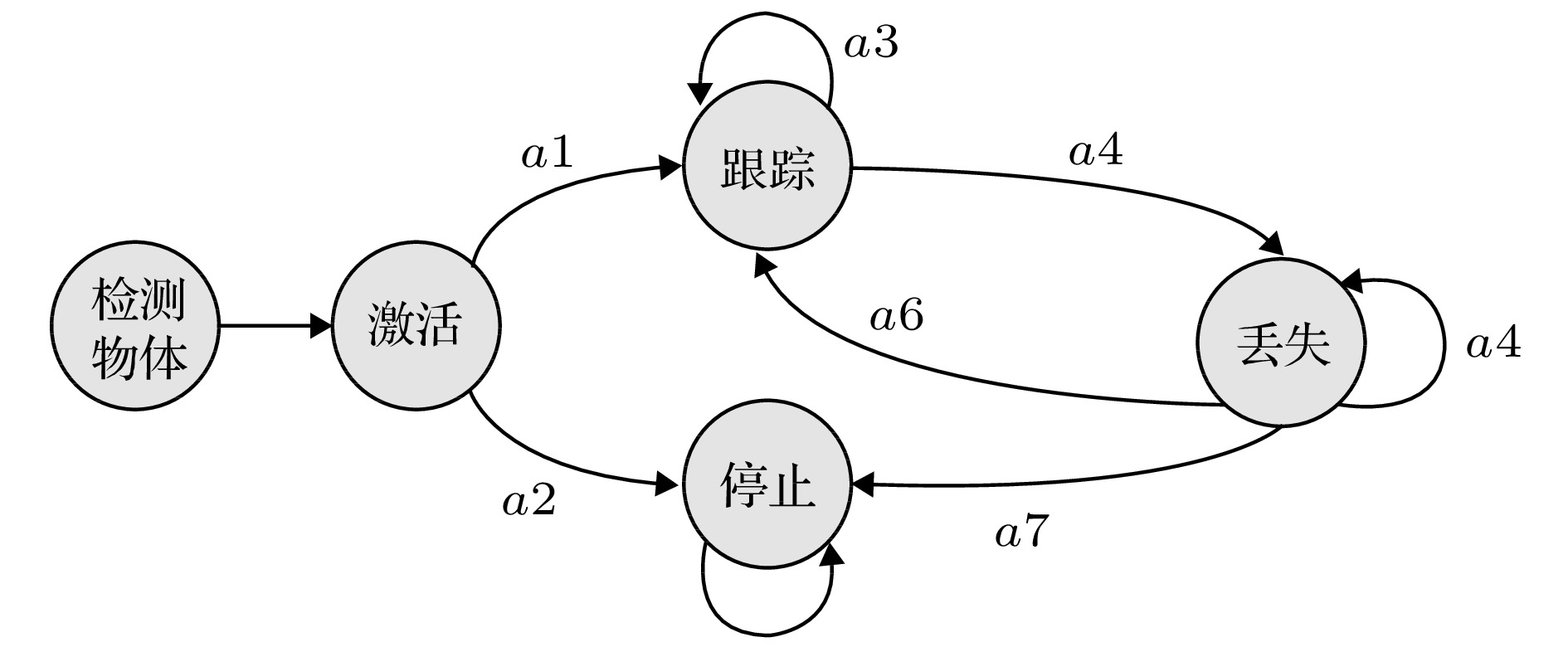
2020, 69 (8): 084203.
doi: 10.7498/aps.69.20191721
Abstract +
Pedestrian tracking is a hotspot and a difficult topic in computer vision research. Through the tracking of pedestrians in video materials, trajectories can be extracted to support the analysis of individual or collected behavior dynamics. In this review, we first discuss the difference between pedestrian tracking and pedestrian detection. Then we summarize the development of traditional tracking algorithms and deep learning-based tracking algorithms, and introduce classic pedestrian dynamic models. In the end, typical applications, including intelligent monitoring, congestion analysis, and anomaly detection are introduced systematically. With the rising use of big data and deep learning techniques in the area of computer vision, the research on pedestrian tracking has made a leap forward, which can support more accurate, timely extraction of behavior patterns and then to facilitate large-scale dynamic analysis of individual or crowd behavior.

COVER ARTICLE
2020, 69 (8): 084701.
doi: 10.7498/aps.69.20200362
Abstract +
Polymer microparticles with various compositions and morphologies have recently received much attention. Their surface-roughness significantly affects the physical and chemical properties, which especially counts in regulating the interaction between biological materials and living systems. In this paper, we design a polystyrene microsphere with controllable surface textures. At first, a microfluidic device is used to generate droplets with uniform size containing the hydrophobic polymer and a co-surfactant. During the volatilization of the organic solvent, the shrinking droplets appear to be unstable at the interface. Thus, the surface area increases spontaneously, and microspheres with wrinkles on the surface are obtained after being solidified. The results show that tuning the concentration of the co-surfactant and the rate of solvent evaporation can effectively regulate the surface roughness of the microspheres. Circulating tumor cell capture experiments reveal that this textured structure can facilitate the cell adhesion and increase the number of the captured cells. These features indicate that the coarse microspheres possess a promising application prospect in the field of biomedical analysis.

2020, 69 (8): 086102.
doi: 10.7498/aps.69.20200332
Abstract +
In the B4 phase of bent-core liquid crystals, smectic layers of tilted achiral bent-core molecules are chiral and polar, which, driven by intra-layer structural mismatch, eventually twist into helical nanofilaments. We design a NOBOW/hexadecane organogel system, which is different from traditional organogel system, and the studied organogels show reversible gel-liquid transitions under temperature cycles. At high temperature, the NOBOW molecules dissolve in hexadecane and the storage modulus and viscous modulus show typical liquid characteristics. At low temperature, the mobility of NOBOW molecules decreases and the storage modulus of the organogels increases as the temperature decreases. We conduct a rheology experiment to systematically investigate the viscoelasticity of the organogel to understand the property of the organogel and develop the application in soft matter. The viscoelastic studies of the organogels reveal that the helical nanofilaments are internally strained and their 3D networks are relatively stiff, which provides an in-depth insight into the properties of the organogels and paves the way for their applications in soft matter.

2020, 69 (8): 088901.
doi: 10.7498/aps.69.20191817
Abstract +
Link prediction in complex networks has attracted much attention in recent years and most of work focuses on proposing more accurate prediction algorithms. In fact, “how difficultly the target network can be predicted” can be regarded as an important attribute of the network itself. In this paper it is intended to explain and characterize the link predictability of the network from the perspective of spectrum. By analyzing the characteristic spectrum of the network, we propose the network link predictability index. Through calculating the index, it is possible to learn how difficultly the target network can be predicted before choosing algorithm, and to solve the problem whether the network is unpredictable or the algorithm is inappropriate. The results are useful for the selecting and matching the complex network and link prediction algorithms.
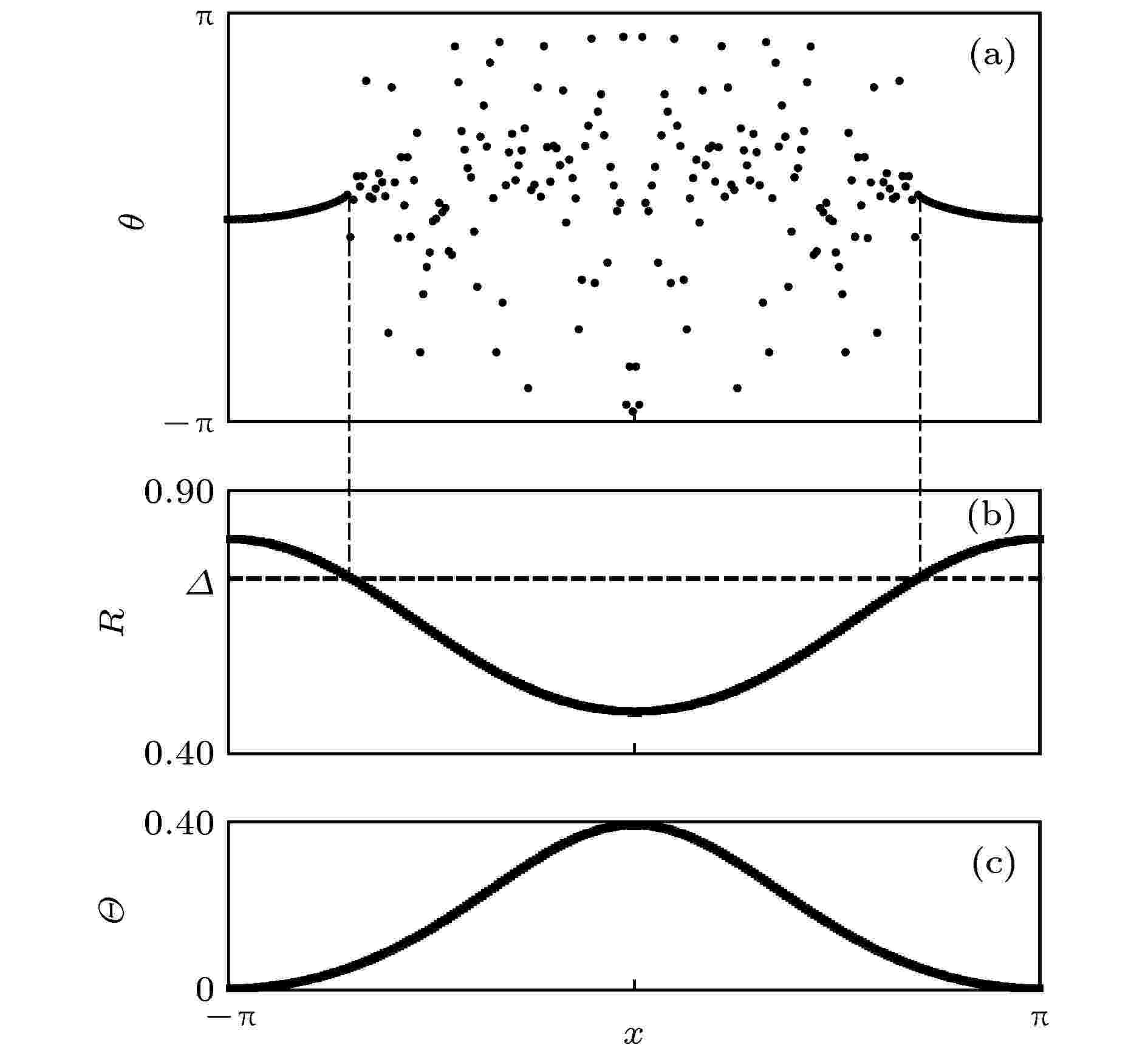
2020, 69 (8): 088902.
doi: 10.7498/aps.69.20191973
Abstract +
In recent years, the study of partial synchronization of coupled oscillators in complex networks has attracted great attention. The underlying reason is both the extensive existence of the patterns of partial synchronization in brain network and their close relationship to brain functions of cognition and memory. In this paper, we briefly review the research progress in this field. According to the researches by different groups, we classify them as three types, i.e. chimera state, remote synchronization, and clustering synchronization. We mainly discuss the conditions of these three states, as well as their models, detections, and their applications in biology. We discuss the relationship among the three types of states and give some outlooks for future studies.
2020, 69 (8): 088903.
doi: 10.7498/aps.69.20191686
Abstract +
Many spatial mobility of people, goods and information, such as human travel, population migration, commodity trade, information communication, social interaction and scientific cooperation, follow a law similar to Newton’s law of universal gravitation. This law, named social gravity law, is that the flow between two locations is directly proportional to the product of the vitality of these two locations, and inversely proportional to a power function of their distance. The gravity model established by analogy with the gravity law has also been widely used to predict trip distribution, population migration, interregional trade flows, etc. But why do many complex social systems have such a simple law? It is an interesting and valuable issue. This paper reviews the research on exploring the roots of the social gravity law from various perspectives, including statistical physics, microeconomics, and game theory.
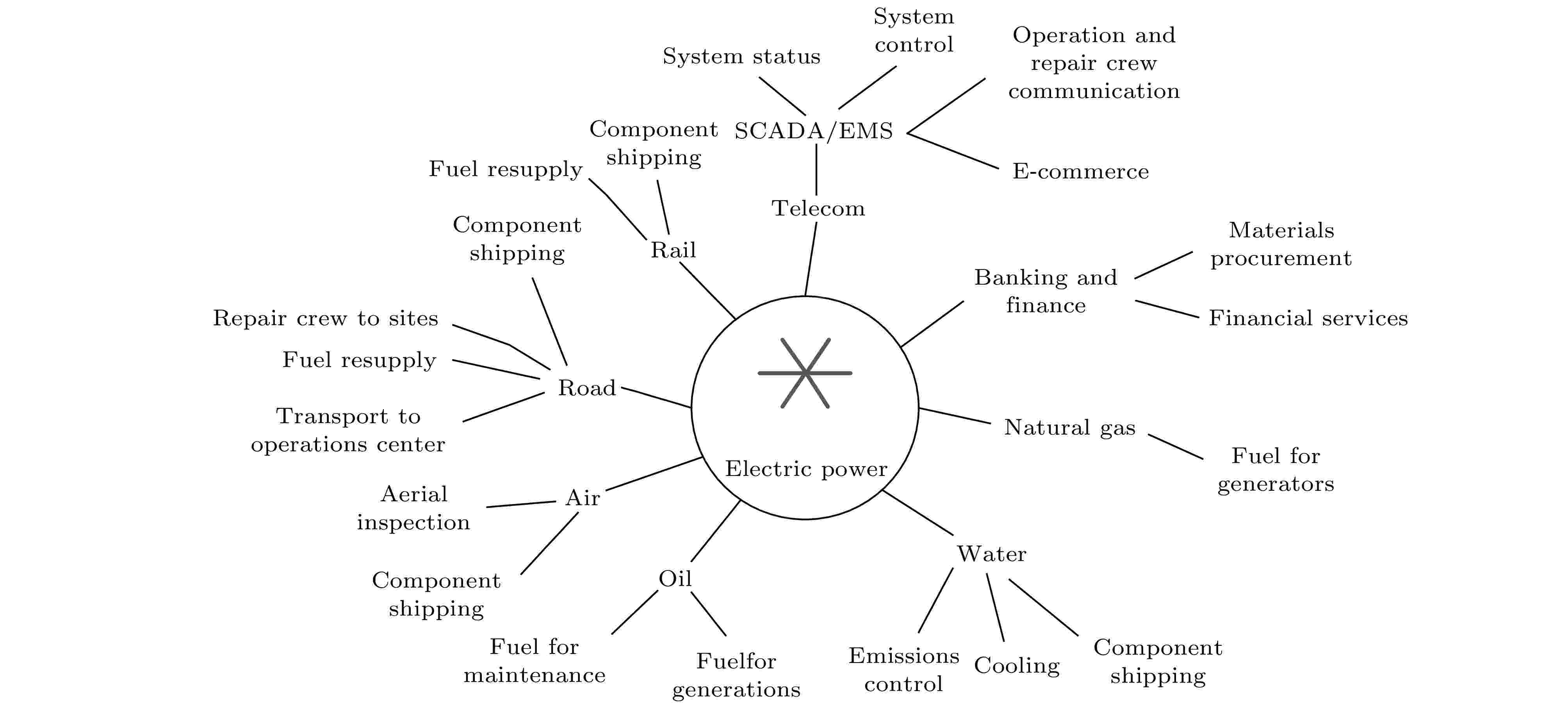
2020, 69 (8): 088904.
doi: 10.7498/aps.69.20192000
Abstract +
In real life, most of the infrastructure networks closely related to the national economy and people's livelihood do not exist independently, but are interconnected with or dependent on each other, so the multilayer network model is proposed to study the independent complex systems and infrastructures. When the nodes in the multilayer network suffer initial failure or attack, the cascade occurs due to the interaction between the “intra-layer” and “inter-layer”, and the failure can propagate in the network layer and across the layers iteratively, so that the scale of the failures is enlarged gradually. As a result, many multilayer networks are more fragile than single networks. The cascading failure of multilayer network usually brings very serious catastrophes to our society. So, conducting the research on preventing the multilayer network from cascading failure and recovering is of great significance. As far as the prevention of cascading failure is concerned, what are mainly included are the strategies such as the fault detection, the protection of important nodes, the optimization of the coupling method of networks, and the backup of nodes. As for the recovery of multi-layer network, included mainly are the strategies such as common boundary node recovery, the idle connected link recovery, the link addition, the priority recovery of important nodes, the topology perturbation, and the repairing of localized attack and adaptive link.

2020, 69 (8): 088905.
doi: 10.7498/aps.69.20191970
Abstract +
In this paper, we propose a new type of relativistic regional innovation index by using the international patent application data. Based on the super-linear relationship between regional innovation and economic development, the new index can eliminate the influence of economic development level on innovation capabilities, and can effectively achieve the comparison of innovation capabilities among economies at different economic development levels. This new index is quite simple, and points out a series of new findings that are sharply different from the traditional cognitive phenomena, e.g. the index shows that the technological innovation capabilities of mainland China are among the highest in the world in 1980s. Moreover, the use of this new index not only can efficiently explain the economic growth of countries in the world at a higher level, but also find that there is a novel 20-year business cycle in the correlation between the index and economic growth rate. These results show that the index, as a simple single indicator, can achieve a higher degree of explanatory ability with minimal data dependence. This new index not only repositions the innovation capacity of world’s economies, but also provides a new insight into an in-depth understanding of the relationship between innovation and economic development, and implies the development potential and application space such a kind of relativistic economic indicator.

2020, 69 (8): 088906.
doi: 10.7498/aps.69.20200001
Abstract +
Open complex systems far from equilibrium widely exist in the nature and the fields of society and technology, which are the main research objects of complexity science. Through the exchange of energy and material with the outside world, complex systems can form a variety of internal structures, orders and laws by self-organization behaviors, which poses an arduous challenge to the understanding and predicting complex systems. With the improvement of experimental technology and the progress of science and technology, the data reflecting the mechanism of various complex systems are increasing exponentially, thereby providing new opportunities for studying complex systems. Revealing the structures and dynamics of complex systems from the measured data is an inverse problem in the field of physics, which is the premise of understanding complex systems, predicting the evolution of system state, and regulating system state. However, it is very difficult to solve this inverse problem due to the diversity and complexity of complex system. Therefore, we need to fully mine the hidden knowledge and deep mechanism in the data with the help of interdisciplinary integration. In this paper we briefly review the research results of complex system in recent years, especially the reconstruction of complex network structures, hoping to inspire the innovation to the inverse problem of complex systems. Meanwhile, we hope that researchers in different fields can pay much attention to the inverse problems of complex systems, promote the cross and integration of nature, society, economy, biology and technology, and solve the scientific problems that we are facing.

2020, 69 (8): 088907.
doi: 10.7498/aps.69.20191954
Abstract +
With the development of power electronic technology and requirement for clean energy, the traditional power systems which are dominated by synchronous generators are gradually changing into the power-electronic-based power systems with diversified power electronic equipment. The power systems are facing a great revolution in their primary equipment, and this has not happened in the past one hundred years. In recent years, with great increasing penetration of power electronic devices into power grids, the large-scale blackouts caused by power electronic devices have been reported, which seriously threatens the safe and stable operation of power systems. Under the above background, in this paper we first introduce several methods of analyzing the traditional power system transient stability from the equal area criterion for the single machine infinite bus system to several Lyapunov function based direct methods for multi-machine systems. Then we introduce some of our recent work on the nonlinear modeling and analysis of a key component of power-electronic-based power systems, voltage source converter (VSC), and propose a multiple machine system model including power electronic equipment and traditional synchronous machines. Finally, we illustrate the transient characteristics of the power electronic devices, and summarize the basic problems and challenges for the transient stability of power-electronic-based power systems. We hope that these basic problems in power-electronic-based power system dynamics including nonlinearity, multi-time-scale, and complexity could arouse the general interest of researchers in the fields of complex systems and statistical mechanics.
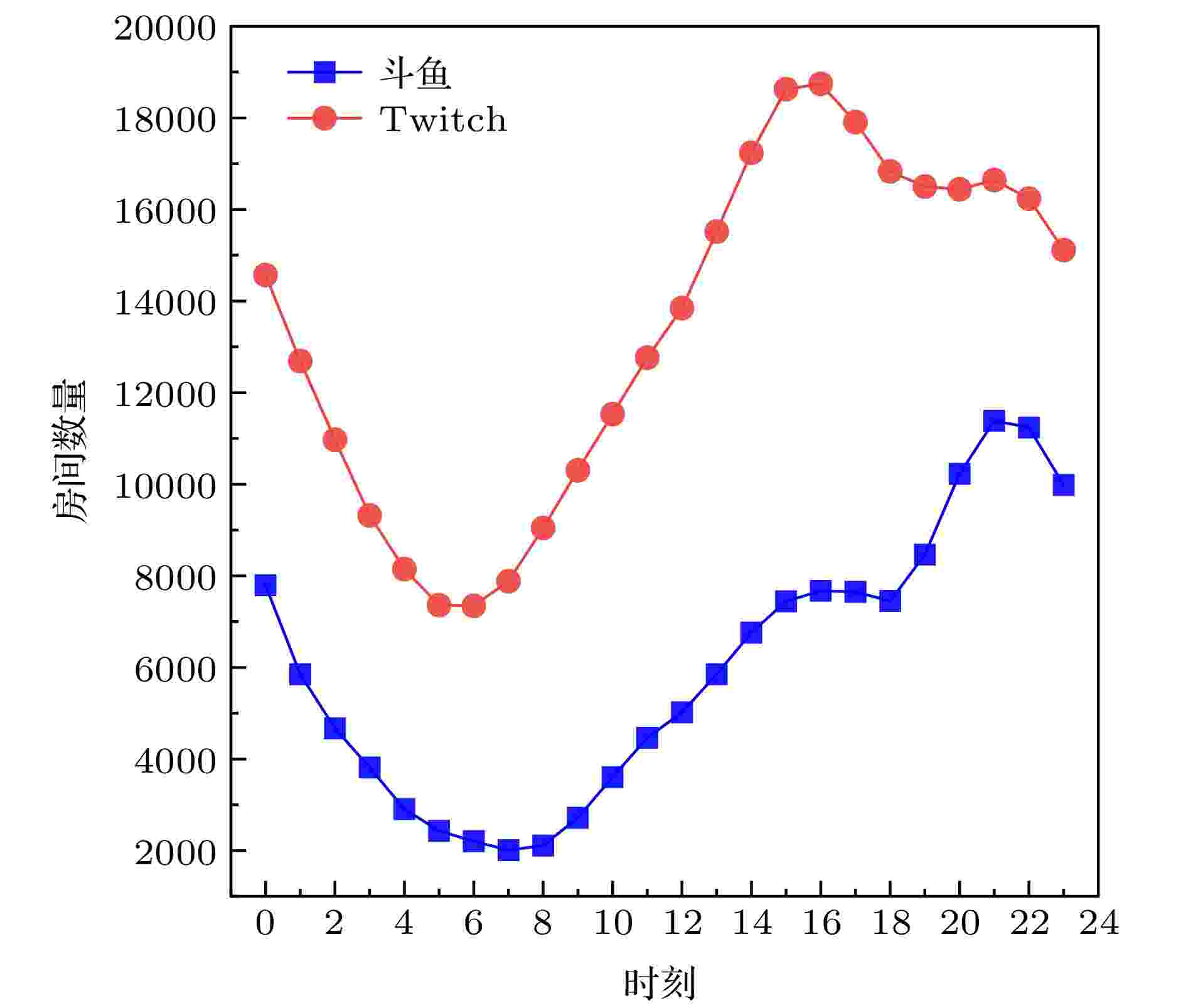
2020, 69 (8): 088908.
doi: 10.7498/aps.69.20191776
Abstract +
With the rapid development of mobile communication and Internet technologies, online live streaming has gradually become popular for information communication and entertainment in the new media environment. Live streaming has been widely used in teaching, reality show, E-sports games and events, brand marketing and other aspects. With the active participation of millions of streamers and hundreds of millions of viewers, massive online crowd behavior activity data are generated, which offers rich experimental scenarios for large-scale crowd behavior dynamics research, live streaming channel recommendation and online community evolution. In this paper, we summarize the relevant research literature of live streaming, and review current studies from a comprehensive list of aspects: workload pattern, viewers and streamers behavior, community network discovery and analysis, etc. We summarize the temporal and spatial patterns of live streaming platform workload, heavy tailed effect of large-scale crowd behavior in live streaming platform, etc. We believe that the future work on live streaming can be directed in the examination of formation and evolution mechanism of various community networks formed by large-scale users, as well as the recommendation and detection of live streaming content.
GENERAL

2020, 69 (8): 080202.
doi: 10.7498/aps.69.20191829
Abstract +
The phase separation phenomenon between different matters plays an important role in many science fields. And the high order nonlinear Cahn-Hilliard (C-H) equation is often used to describe the phase separation phenomenon between different matters. However, it is difficult to solve the high-order nonlinear C-H equations by the theorical methods and the grid-based methods. Therefore, in this work the meshless methods are addressed, and a local refinement finite pointset method (LR-FPM) is proposed to numerically investigate the high-order nonlinear C-H equations with different boundary conditions. Its constructive process is as follows. 1) The fourth derivative is decomposed into two second derivatives, and then the spatial derivative is discretized by FPM based on the Taylor series expansion and weighted least square method. 2) The local refinement and quintic spline kernel function are employed to improve the numerical accuracy. 3) The Neumann boundary condition with high-order derivatives is accurately imposed when solving the local linear equation sets. The 1D/2D C-H equations with different boundary conditions are first solved to show the ability of the LR-FPM, and the analytical solutions are available for comparison. Meanwhile, we also investigate the numerical error and convergence order of LR-FPM with uniform/non-uniform particle distribution and local refinement. Finally, 1D/2D C-H equation without analytical solution is predicted by using LR-FPM, and compared with the FDM result. The numerical results show that the implement of the boundary value condition is accurate, the LR-FPM indeed has a higher numerical accuracy and convergence order, is more flexible and applicable than the grid-based FDM, and can accurately predict the time evolution of nonlinear diffusive phase separation phenomenon between different materials time.
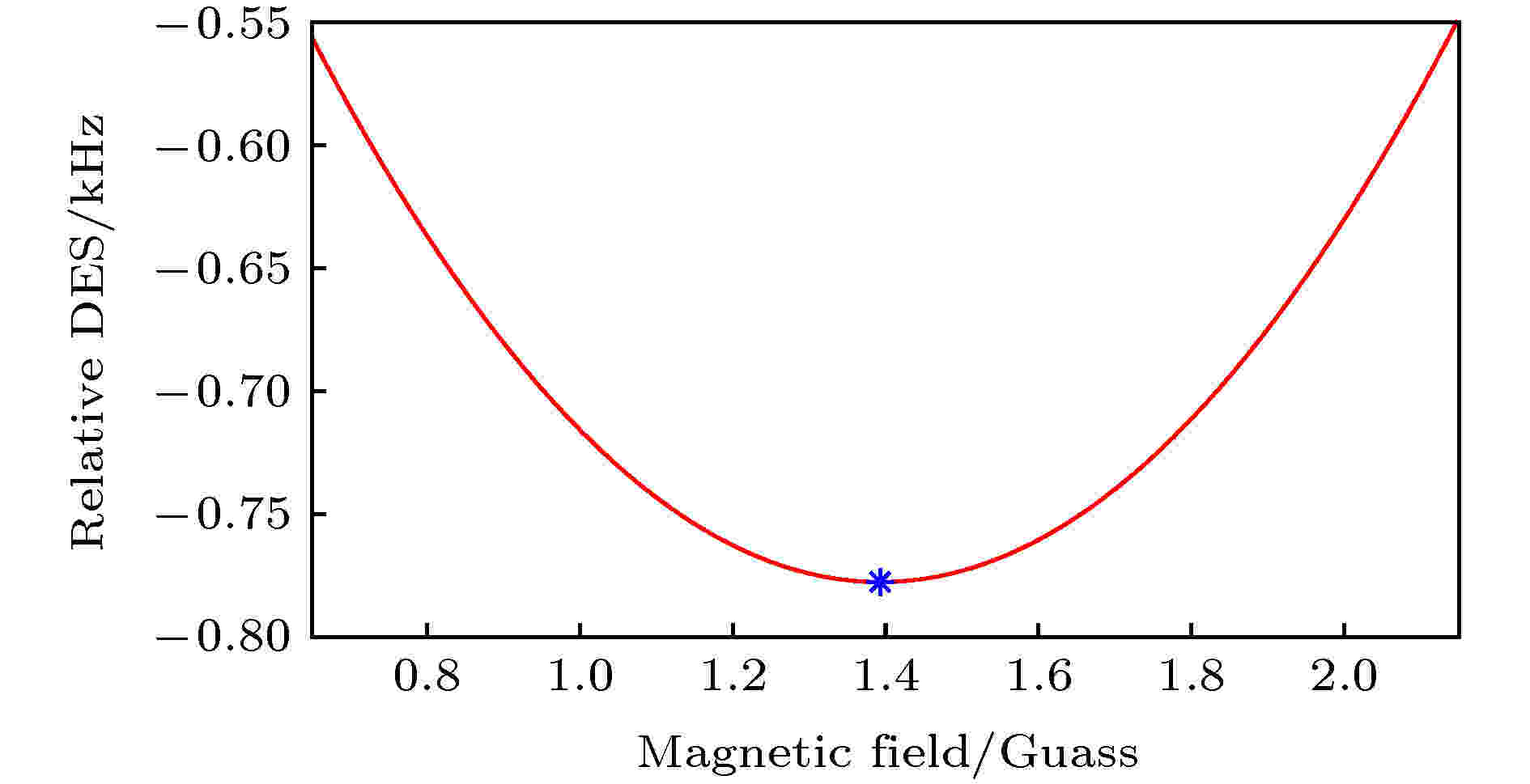
EDITOR'S SUGGESTION
2020, 69 (8): 080301.
doi: 10.7498/aps.69.20192001
Abstract +
Qubit encoded in single neutral atoms is a basic experimental platform for studying the quantum computation, quantum information processing and quantum simulation. The extension of the coherence time has been an important task in recent years. On the basis of the single cesium neutral atom trapped in blued-detuned dipole trap, we study the coherence time of a qubit, which is encoded in a pair of magnetically insensitive ground states of cesium atom ($\left| {\rm{0}} \right\rangle = \left| {{\rm{6}}{{\rm{S}}_{1/2}},F = 3,{m_F} = - 1} \right\rangle $ and $\left| 1 \right\rangle = \left| {{\rm{6}}{{\rm{S}}_{1/2}},F = 4,{m_F} = + 1} \right\rangle $ ), in the “magic” magnetic field condition. By adopting a two-photon process, in which a microwave photon and an RF photon are used, we obtain the coherence manipulation of the qubit. The dependence of differential energy shift on magnetic field is experimentally studied, and the “magic” magnetic field is determined. In this magic condition, the first derivative of differential energy shift between $\left| {\rm{0}} \right\rangle = \left| {{\rm{6}}{{\rm{S}}_{1/2}},F = 3,{m_F} = - 1} \right\rangle $ and $\left| 1 \right\rangle = \left| {{\rm{6}}{{\rm{S}}_{1/2}},F = 4,{m_F} = + 1} \right\rangle $ in quantized magnet field is zero, which means that the qubit is immune to the fluctuation of magnetic field and the coherence time can be substantially prolonged. The experimentally obtained magic magnetic field is B = 1.4(2) Gauss, which is in good agreement with the theoretical calculation value B = 1.393 Gauss. Finally, we measure the qubit coherence time by setting the quantized magnetic field to be at magic point B = 1.396 Gauss. The qubit coherence time is measured to be 11(1) ms by Ramsey interferometer, where the main decoherence factor is the inhomogeneous dephasing due to the atomic motion in the dipole trap. This incoherence factor can be dramatically suppressed by a spin-echo process where an additional π-pulse is inserted in between the two π/2 pulses. At the magic magnetic point the qubit coherence time can be extended to 1 s by the spin-echo method.
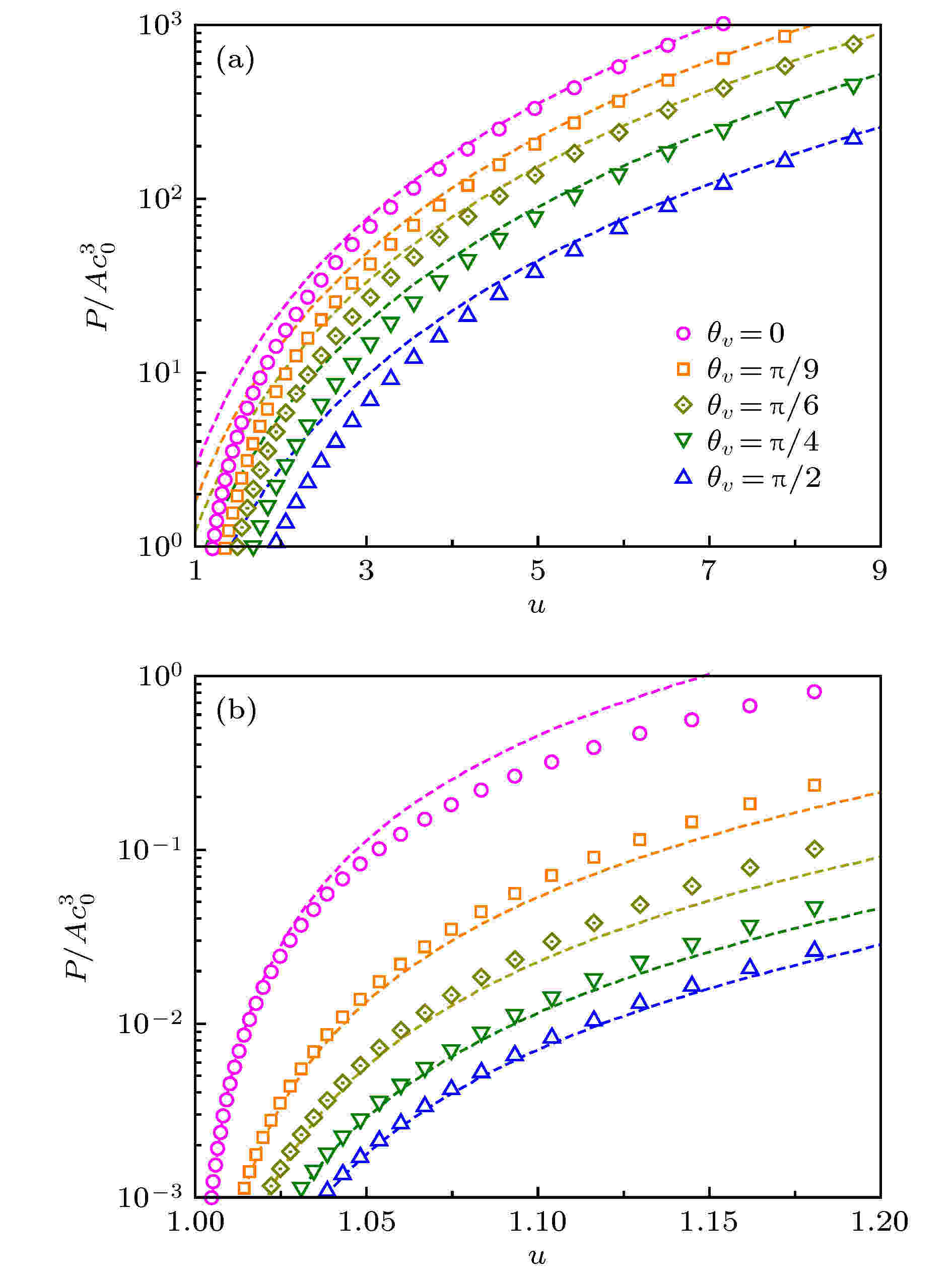
2020, 69 (8): 080302.
doi: 10.7498/aps.69.20200025
Abstract +

2020, 69 (8): 080501.
doi: 10.7498/aps.69.20191964
Abstract +
Hofstadter ladder describes a Boson ladder under a uniform magnetic field and supports nontrivial energy band and fractional quantum Hall states. Staggered hopping is illuminated from the SSH model and proved to have non-trivial effects on current phases. We introduce staggered hopping on Hofstadter ladder to study the novel current phases. Exact diagonalization (ED) and density matrix renormalization group (DMRG) methods have been employed to study the current phases of the ladder in noninteraction and strong interaction (hard core boson) cases. By observing energy singularities and the new flux patterns when increasing the staggered hopping strength, we extend Meissner and vortex phase to horizontal current phase, vertical current phase and vortex phase. The horizontal current phase has stronger chiral currents in horizontal direction, which is the long direction of the ladder. The vertical current phase has stronger chiral currents in vertical direction. The above two phases do not break translational invariance while the vortex phase does. The current patterns of horizontal current phase are proved to be continuously deformed form the Meissner phase, and the vortex phase has similar signatures. The vertical current phase is only visible when the hopping is staggered. These phases generally exist in noninteraction regimes and interacting superfluid regimes. We have defined new quantities (i.e. current inhomogeneity and nearest overlap) to characterize different quantum phases. In noninteraction case, the horizontal current phase go through the vortex phase to enter the vertical current phase by second order phase transitions, but in strong interaction case such a change can be directly made in a first order phase transition. The direct transition is made in higher fillings with almost identical flux. Surprisingly, the three phases turn into only two phases in Mott regimes, and the phase transition between the horizontal current phase and the vertical current phase has disappeared. We call the new phase as Mott-homogenous phase. The staggered hopping has exotic effects in strong interaction case. For n = 0.25 filling, the staggered hopping shrinks the region of vortex phases and produces Mott-SF transition. When the staggered hopping is weak, the system achieves Mott-SF transition just by varying the flux. This research can enrich current phases in lattice systems and illuminate further studies on chiral currents.

2020, 69 (8): 080504.
doi: 10.7498/aps.69.20191774
Abstract +
With the improvement of people's living standards, large-scaled public activities have increased considerably, and the emergency probability has increased greatly. When an emergency occurs, the emergency evacuation can effectively reduce casualties and economic losses. Therefore, how to quickly evacuate crowd is a current research hotspot in this field. The path planning of emergency evacuation is one of the effective ways to implement the crowd evacuation. Aiming at the problem of path planning for emergency evacuation and taking the grid map as the background, the ant colony cellular optimization (ACCO) algorithm is proposed as the path planning algorithm based on the cellular automata theory and ant colony algorithm. Firstly, in order to solve the problem of inconsistent time steps in the quadrilateral grid map, the grid map based on hexagonal cell is established and the ACCO algorithm is developed based on the hexagonal grid map. And the method of solving grid coordinate is given. Then, in order to improve the convergence speed and search ability of the ACCO algorithm, the static field is used to optimize the heuristic function, and the segment update rule is used to optimize the pheromone update method. Finally, the parameters of ACCO algorithm are optimized through the particle swarm optimization (PSO) algorithm. The method of designing the fitness evaluation function is proposed, and the optimal combination of parameters of the ACCO algorithm is implemented according to the fitness function. In order to verify the scientificity and effectiveness of the algorithm proposed in this research and also to systematically verify the optimization strategy, in this research the exhibition hall on the B-deck of a large cruise ship is used as the engineering background, and the traditional algorithm and the ACCO algorithm are adopted to perform the simulations. The simulation results show that compared with the traditional quadrilateral grid, the hexagonal grid proposed in this research unifies the simulation time step and can be used as the division method of the simulation environment. At the same time, the ACCO algorithm can effectively perform the evacuation path planning, and the optimization strategy proposed in this research not only acceletates the search speed, but also increases the solution space and improves the search ability, which can effectively avoid falling into the local optimal solution.

2020, 69 (8): 080701.
doi: 10.7498/aps.69.20200285
Abstract +
ATOMIC AND MOLECULAR PHYSICS

2020, 69 (8): 083401.
doi: 10.7498/aps.69.20200132
Abstract +
The C(3P) + H2 → CH+H reaction in a collision energy range of 1.0–2.0 eV with the initial state $\nu = 0{\rm{ }},j = 0$ is investigated based on the new potential energy surface (PES) by using the Chebyshev wave packet method. All partial wave contributions up to J = 60 are calculated explicitly by the coupled state (CS) approximation method and the Coriolis coupling (CC) effect. Dynamic properties such as reaction probabilities, integral cross sections, and state specific rate constants are calculated. The calculated probabilities and integral reaction cross sections display an increasing trend with the increase of the collision energy and an oscillatory structure due to the CH2 well on the reaction path. The thermal rate constants of the endoergic reaction with a temperature ranging from 1000 K to 2000 K are obtained also. The calculated rate constants increase in the entire temperature range, showing a sharp T dependence in a range of 1400–2000 K. The rate constants are sensitive to the temperature due to the high threshold of the title reaction. In addition, the results of the exact calculations including CC effect are compared with those from the CS approximation. For smaller J, the CS probabilities are larger than the CC results, while for larger J, they are smaller than the CC ones. For reaction cross sections and rate constants, the CS results and the CC ones are in good agreement with each other at lower energy. However, they turn different at higher energy. The comparison between the CC and CS results indicates that neglecting the Coriolis coupling leads the cross sections and the rate constants to be underestimated due to the formation of a CH2 complex supported by stationary point of CH2(${\tilde{\rm X}}{}^3 \rm A''$ ) PES. It is suggested that the CH2 complex plays an important role in the process of the title reaction. However, it seems to overestimate the CS and CC rate constants because the barrier recrossing is neglected. Unfortunately, the results obtained in the present work have no corresponding theoretical or experimental data to be compared with, therefore these results provide simply a certain reference significance to the follow-up study of the title reaction.
ELECTROMAGNETISM, OPTICS, ACOUSTICS, HEAT TRANSFER, CLASSICAL MECHANICS, AND FLUID DYNAMICS

2020, 69 (8): 084201.
doi: 10.7498/aps.69.20191933
Abstract +
Micro-impurity pollution is always one of the key factors affecting the quality and service life of precision devices. Micro-nano impurity particles are difficult to remove by traditional cleaning methods (ultrasonic cleaning, etc.) and low removal efficiency by laser cleaning methods (dry laser cleaning, etc.). The laser plasma shock wave has high pressure and high temperature characteristics, which can remove nano-scaled impurity particles, and has great potential applications. In this work, we mainly study the thermodynamic effect of the laser plasma in the process of removing micro- and nano-particles. In this work, the Al particles on the Si substrate are removed by laser plasma shock wave, and the transformation of the particle state is discussed through the changes of the experimental sample morphology after different pulse effects. The experimental results show as follows With the increase of the pulse number, the micro- and nano-particle residues gradually decrease. At the same time, on the surface of the sample after these particles are removed, it can be found that large particles break up into small particles, and some of the particles will change into smooth spheres when their temperatures reach the melting point. These phenomena are the result of the interaction of the thermodynamic effect of the plasma. In order to study the transformation process of particle state, based on the plasma shock wave propagation theory, the evolution law of pressure characteristic and temperature characteristic of shock wave are obtained. From the evolution law, it can be seen that with the increase of shock wave radius, the pressure and temperature gradually decrease. When the shock wave propagates to the surface of a sample, it can reach the compression threshold and correspondingly the surface temperature arrives at melting temperature of particles, which are consistent with the experimental results. By using the finite element simulation method, the pressure and temperature of laser plasma shock wave acting on particles are studied. The stress distribution and temperature distribution in particles varying with time are obtained. The analysis results are consistent with the experimental results, and therefore the thermodynamic mechanism of plasma on particles is obtained.
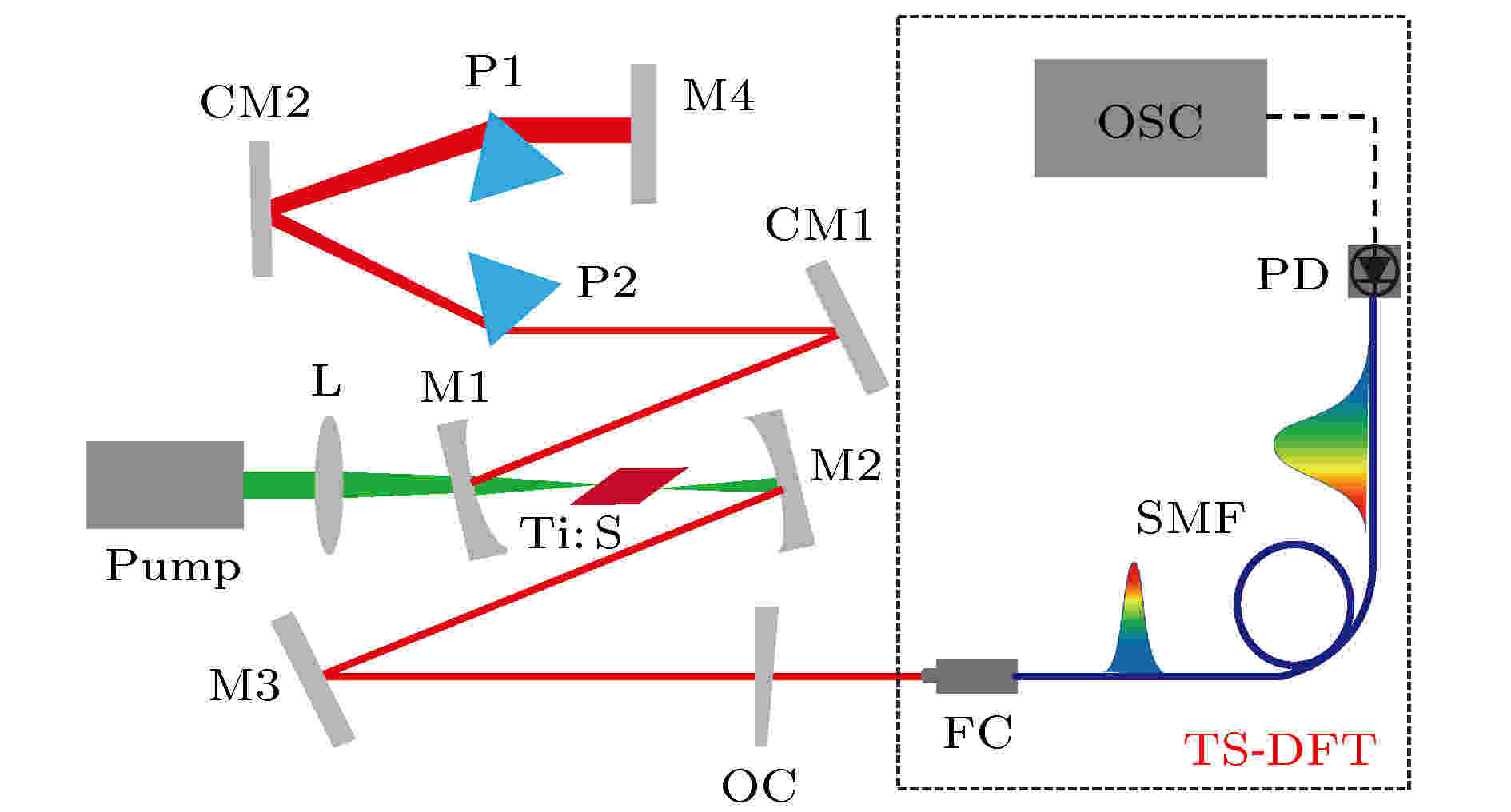
EDITOR'S SUGGESTION
2020, 69 (8): 084202.
doi: 10.7498/aps.69.20191989
Abstract +
Soliton is a universal format of nonlinear wave propagation in nature. Soliton can maintain its shape during propagation. This unique property has been widely observed in plasma physics, high energy electromagnetics, hydrodynamics, and nonlinear optics. Soliton interactions can reflect collective dynamic behaviors in complex nonlinear systems, showing significant basic research value. Passive mode-locked laser is an ideal platform for studying soliton interaction. The attraction and repulsion between two optical solitons can form soliton molecules. Their properties have been intensively studied by optical spectral analysis. However, conventional optical spectrum analyzers show low resolution and long average time. Time-stretched dispersive Fourier transformation (TS-DFT) is an emerging-powerful measurement technology, which can map the spectrum of an optical pulse to a temporal waveform under sufficient dispersion. The TS-DFT makes it possible to detect the dynamics of the solitons in real time. Based on TS-DFT, the internal dynamics of the solitons in Ti:sapphire femtosecond laser is studied in experiment. By changing the pump power, the stable soliton molecules with a separation of 180 fs and the weak phase oscillatory soliton molecules with a separation of 105 fs are observed. The amplitude in the weak oscillation state is merely 0.05 rad. We also find that the soliton molecules in stable state can transform into phase sliding state under environmental perturbation. These optical soliton molecules with a binding separation of 100 fs are of great significance for studying the short-range nonlinear interactions of solitons.
PHYSICS OF GASES, PLASMAS, AND ELECTRIC DISCHARGES

2020, 69 (8): 085201.
doi: 10.7498/aps.69.20191864
Abstract +
There are several methods of diagnosing the capacitively coupled plasma, such as microwave resonance probe, Langmuir probe, etc, but methods like microwave resonance probe are mainly used for determining the electron density. Moreover, in the diagnosing of plasma potential, the emissive probe has a higher accuracy than the traditional electrostatic probes, and it can directly monitor the potential in real time. However, in the existing work, emissive probe is mostly applied to the diagnosis of plasmas with high density or plasmas modulated by pulsed dual frequency (one of the radio frequency sources is modulated), the experiments on the emissive probe diagonising plasma excited by a pulsed single frequency are quite rare. In this paper, the temporal evolution of the plasma potential and electron temperature with input power and pressure in a pulsed 27.12 MHz capacitively coupled argon plasma are investigated by using an emissive probe operated in floating point mode. The plasma potential is obtained by measuring emissive probe potential under a strongly heated condition, while the electron temperature is estimated from the potential difference between the emissive probe under strongly heating and cold conditions. The measurements show that as the pulse is on, the plasma potential will rise rapidly and become saturated within 300 μs due to the requirement for neutrality condition; while the pulse is off, the plasma potential undergoes a rapid decline and then stabilizes. An overshoot for the electron temperature occurs as the onset of the pulse, because of the influence of radio frequency electric field and residual electrons from the last pulse; during the pulse-off time, rapid loss of high-energy electrons causes the electron temperature to rapidly drops to 0.45 eV within 300 μs, then it rises slightly, which is related to the electrons emitted by the probe. The plasma potential basically has a linear dependence on the change of input power and pressure for the pulse-on and pulse-off time; and the input power has a greater influence on the difference between the overshoot electron temperature and the steady state electron temperature during the pulse-on time. Corresponding explanations are given for the temporal evolution of plasma potential and electron temperature in different pulse stages and under different discharge conditions.
CONDENSED MATTER: STRUCTURAL, MECHANICAL, AND THERMAL PROPERTIES

2020, 69 (8): 086101.
doi: 10.7498/aps.69.20191896
Abstract +
Fin field effect transistor (FinFET) is a most widely used structure when the field effect transistor is scaled down to 30 nm or less. And there are few studies on single-event transient of FinFET devices with gate length below 30 nm. The single-event-transient on FinFET with gate length below 30 nm is worth studying. The single-event-transient responses of bulk FinFETs with 30 nm, 40 nm, 60 nm and 100 nm gate length are examined by using the pulsed laser and technology computer-aided design (TCAD) simulation in this article. First, we use the pulsed laser to ionize the gate of the FinFET device and detect the transient drain current of the FinFET device. The experimental results show that there are obvious platforms for the transient drain current tails of FinFETs with different gate lengths, and the platform current increases as the gate length of FinFET becomes shorter. The charges collected in the platform of FinFET devices with gate lengths of 100, 60, 40, and 30 nm are 34%, 40%, 51%, and 65% of the total charge collected in transient drain current, respectively. Therefore, when the FinFET device with the gate length below 100 nm, the platform current will seriously affect the device performance. Second, we use TCAD to simulate the heavy ion single-event effect of FinFET device and study the generation mechanism of platform region in transient drain current. The TCAD simulation explains this mechanism. Laser or heavy ions ionize high concentration electron-hole pairs in the device. The holes are quickly collected and the high concentration electrons are left under the FinFET channel. High concentration electrons conduct source and drain, generating the source-to-drain current at the tail of the transient drain current. Moreover the source-drain conduction enhances the electrostatic potential below the FinFET channel and suppresses high-concentration electron diffusion, making source-to-drain current decrease slowly and form the platform. The transient drain current tail has a long duration and a large quantity of collected charges, which seriously affects FinFET performance. This is a problem that needs studying in the single-event effect of FinFET device. It is also a problem difficult to solve when the FinFET devices are applied to spacecraft. And the generation mechanism of the transient drain current plateau region of FinFET device can provide theoretical guidance for solving these problems.
CONDENSED MATTER: ELECTRONIC STRUCTURE, ELECTRICAL, MAGNETIC, AND OPTICAL PROPERTIES

2020, 69 (8): 087801.
doi: 10.7498/aps.69.20191923
Abstract +
A green and low-cost method to prepare high-quality GaN (gallium nitride) nanowires is important for the applications of GaN-based devices on a large scale. In this work, high-quality GaN nanowires are successfully prepared by a green plasma enhanced chemical vapor deposition method without catalyst, with Al2O3 used as a substrate, metal Ga as a gallium source and N2 as a nitrogen source. The obtained GaN nanomaterials are investigated by using X-ray diffraction (XRD), scanning electron microscopy (SEM), transmission electron microscopy (TEM), Raman spectroscopy, and photoluminescence (PL) spectroscopy. The XRD results demonstrate that hexagonal-wurtzite GaN is obtained and no other phases exist. The SEM results show that GaN nanowires and hexagonal GaN microsheets are obtained at different temperatures. When the growth temperature is at 950 ℃ (reaction time for 2 h), the hexagonal GaN microsheets each with a size of 15 μm are obtained. When the growth temperature is at 1000 ℃(reaction time for 2 h), the GaN nanowires with the lengths in a range of 10–20 μm are obtained. With the reaction temperature increasing from 0.5 h to 2 h, the lengths of GaN nanowires increase. The TEM results suggest that the GaN nanowires are of high crystallinity and the growth direction of GaN nanowires is in the [0001] direction. The Raman results indicate that there exists a compressive stress in the GaN nanowires and its value is 0.84 GPa. Meanwhile, the growth mechanism of GaN nanowires is also proposed. The morphologies of GaN nanomaterials are tailed by the growth temperature, which may be caused by Ga atomic surface diffusion. Ga atoms have low diffusion energy and small diffusion length at 950 ℃. They gather in the non-polar m-plane. The (0001) plane with the lowest energy begins to grow. Then, hexagonal GaN microsheets are obtained. When reaction temperature is at 1000 ℃, the diffusion length of Ga atoms increases. Ga atoms can diffuse into (0001) plane. In order to maintain the lowest surface energy, the GaN nanowires grow along the [0001] direction. The PL results indicate that the obtained GaN nanowires have just an intrinsic and sharp luminescence peak at 360 nm, which possesses promising applications in photoelectric devices such as ultraviolet laser emitter. Our research will also provide a low-cost and green technical method of fabricating the new photoelectric devices.
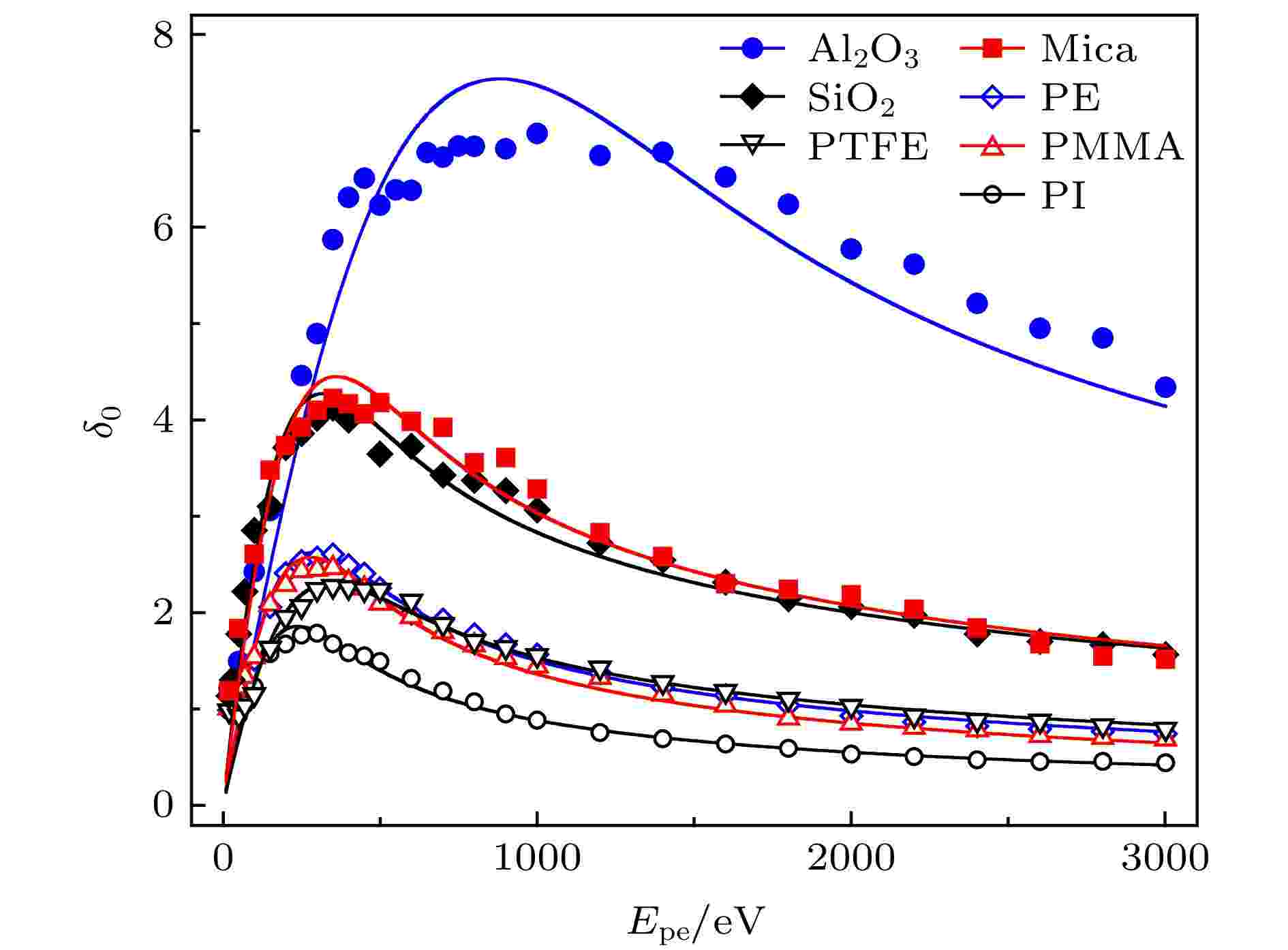
2020, 69 (8): 087901.
doi: 10.7498/aps.69.20200026
Abstract +
For a microwave device filled with dielectrics, the secondary electron (SE) emission has a very important influence on the mechanism of microwave breakdown including low pressure discharge and multipactor. In this work, the SE yields (SEYs) and the SE energy spectra of seven kinds of dielectric materials are first measured and then used to examine their effects. In the positive charging process under electron irradiation, the surface potential of the dielectric layer trends to be steady with the SEY being one. Based on the measurement data, the steady surface potential is calculated under the charging stability condition. The steady surface potential is bigger for a bigger SEY. For a given SEY, the steady surface potential is found to be proportional to the peak energy Epeak of the SE energy spectrum. Furthermore, the effect of steady surface potential on low pressure discharge and multipactor are respectively studied for a parallel plate system filled with a dielectric layer. A static electric field related to the positive charging is introduced. The electron diffusion model in low pressure discharge process is modified by considering the static electric field. The electrons drift in a fixed direction under the action of static electric field, and the electron diffusion length decreases. Consequently, the effective electrons for low discharge decreases and the threshold microwave power increases. Therefore, a dielectric material with higher SEY and bigger Epeak is helpful in suspending the inhibition of low pressure discharge. Furthermore, the effect of steady electric field on multipactor is also explored. Two effects related to dielectric material and metal are analyzed in detail. The SE emission from dielectric material is held back by the steady electric field and some low energy electrons return back to the dielectric materials. The effective SEY thus decreases. On the other hand, the electric field reduces the landing electron energy on the metal, and the corresponding SEY also decreases. The electron oscillation condition with considering both microwave field and stead electric field is derived and the threshold values for microwave power of multipactor are calculated. The susceptibility curves corresponding to different materials are plotted. Our result may be used to choose the filling dielectric materials for a microwave device.
INTERDISCIPLINARY PHYSICS AND RELATED AREAS OF SCIENCE AND TECHNOLOGY

2020, 69 (8): 088701.
doi: 10.7498/aps.69.20191908
Abstract +
Fluorescence microscopic imaging technology realizes specific imaging by labeling biological tissue with fluorescence molecules, which has a high signal-to-noise ratio and has been widely used in the field of medical biology research. Some typical fluorescence microscopy techniques, such as confocal microscopy and two-photon microscopy, have high fluorescence intensity, but the long exposure can cause phototoxicity and photobleaching of biological tissue, which is difficult to meet the demand for long-time observation or noninvasive imaging. Then, light sheet fluorescence microscopy (LSFM) has become a hot research topic in fluorescence micro-imaging in recent years due to its fast speed, high resolution, low photobleaching and low phototoxicity. The imaging speed of a typical light sheet microscopy is not fast enough to observe fast biological activities such as transmission of neural signals, blood flow, and heart beats. At present, many reported light-sheet fluorescence microscopies still have some problems such as fixed imaging surface, slow imaging speed, small imaging depth or residual artifacts. Therefore, in this paper, a rapid light-sheet fluorescence microscopy based on electrically tunable lens is built. To achieve the rapid movement of the focal plane of the detection objective lens, the electrically tunable lens is introduced to meet the reqirement for fast changing of the diopter. Similarly, the rapid movement of light sheet is achieved by introducing one-dimensional galvanometer to change the rotation angle. Fast imaging requires the light sheet and focal plane to overlap in real time, which is then combined with a high-speed sCMOS receiving fluorescence to complete the whole imaging. In the experiment, the vertical depth significantly increases by modifying the optical path, and the LABVIEW programming is used to coordinate and improve the dynamic imaging quality, which effectively reduces the artifacts generated in rapid imaging. Finally, an imaging speed of 275 frames/s with a lateral resolution of ~0.73 μm, vertical resolution of ~5.5 μm, and an imaging depth of ~138 μm is achieved. This is of significance for developing the real-time and non-invasive imaging of living biological tissues.








